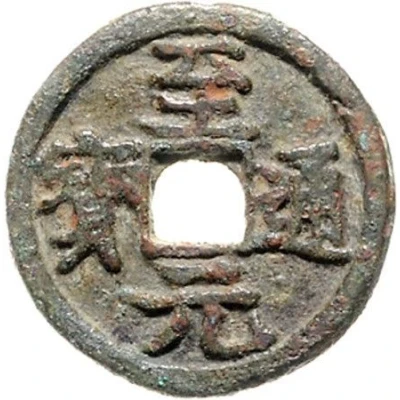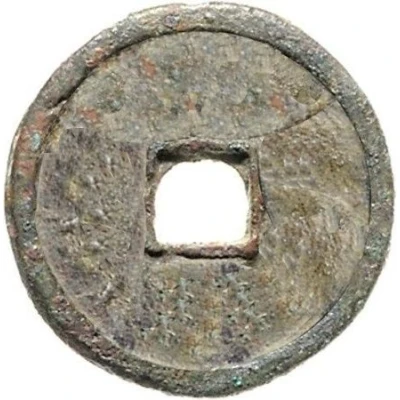2 Cash - Zhishun Tongbao; temple coin ND
| Bronze | - | 25 mm |
| Issuer | Empire of China |
|---|---|
| Emperor | Yuan dynasty › Jayaatu Khan "Wenzong" (元文宗) (1329-1332) |
| Type | Token |
| Years | 1330-1332 |
| Value | 2 Cash |
| Currency | Cash (621-1912) |
| Composition | Bronze |
| Diameter | 25 mm |
| Shape | Round with a square hole |
| Technique | Cast |
| Orientation | Medal alignment ↑↑ |
| Demonetized | Yes |
| Updated | 2024-10-03 |
| Numista | N#221707 |
|---|---|
| Rarity index | 100% |
Reverse
Blank (uniface).
Edge
Plain
Comment
Ayurbarwada Buyantu Khan ceased production of coins in favour of paper money at the start of his reign (1314), even going as far as to make them illegal to use. Standard coins were not produced again until 1350. While this is much larger than the typical temple coin, it could not have been official, but likely still served as a 2 Cash piece.During the Yuan dynasty, there was a preference for paper money and silver ingots, making actual coins scarce or rare. However, the Yuan dynasty emporers supported Buddhism, and allowed temples to cast their own statues and artifacts. These temple coins were originally cast as offerings to Buddha, but due to their metal content, they still had an intrinsic value. While they were not official issues, these were widely accepted and used as small change in the markets.
With these not being official issues, there are different diameters and weights possible. The average weights seem to be around 1/2 Cash, but smaller and larger weights exist.
Interesting fact
One interesting fact about the A Token 2 Cash - Zhishun (Tongbao; temple coin) ND (1330-1332) from Empire of China made of Bronze is that it was used as a form of currency during the Yuan Dynasty, which was established by Kublai Khan, the grandson of Genghis Khan. This coin was used alongside other forms of currency, such as paper money and silver, and was valued at 2 cash, which was a significant amount at the time. The coin features a unique design, with a square hole in the center and a Buddhist inscription on the reverse side, which reflects the influence of Buddhism in China during this period. Additionally, the use of bronze in the production of this coin was a common practice in ancient China, as it was a durable and accessible material.

